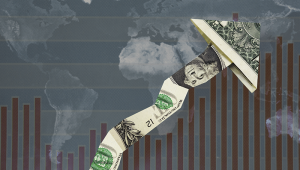
Laith Khalaf
Freedom day’ has come and gone, yet the Bank of England base rate remains resolutely stuck at 0.1%, with £895bn of quantitative easing sloshing around the system to boot.
However, inflation is on the march, leading to speculation about interest rate rises.
In the UK, Consumer Price Index inflation has risen from 0.7% at the beginning of the year to 2.5% in June.
That means it is above target, but the BoE is so far sticking to the course and looking to tough out what it believes to be transitory price rises.
It might well be correct. Some of the rise in headline inflation is a direct effect of economic distortions occurring last spring and summer as the pandemic gripped financial markets.
Take the oil price.
Now trading at around $70 a barrel, last year it sank to $20 – on some contracts, sellers were actually paying someone to take the black stuff off their hands.
So there has been a big bounce back from the nadir in last year’s market, and that is showing in headline inflation figures.
It would not be pretty for mortgage borrowers, or entities with high debts, but central banks have the toolkit to deal with inflation
Likewise, in May, wages were rising at 6.6% year-on-year, according to the Office for National Statistics.
However, a lot of the jobs lost during the pandemic were those of young workers in hospitality, which tend to be lower paid.
The ONS has provided provisional figures, stripping out these temporary effects, which suggest that underlying wage growth is running at somewhere between 3.2% and 4.4%.
That is roughly in line with the long-run average.
We are therefore seeing some inflationary factors that may fade away when we are no longer comparing today’s open economy with last year’s closed one.
However, we should not write off the chances of price rises becoming as endemic as coronavirus.
Huge amounts of fiscal and monetary stimulus have been thrown at the global economy.
As it emerges into a post-pandemic world, inflation could reach ‘escape velocity’.
Central banks are very likely to be slow to deal with any inflationary problems.
If inflation rears its head, they have plenty of scope to raise interest rates, reduce QE and fend off price rises.
It would not be pretty for mortgage borrowers, or entities with high debts, but central banks have the toolkit to deal with inflation.
What they do not have is much scope to fend off another economic downturn.
Rates are at rock bottom, and the shock and awe of QE is becoming water off a duck’s back.
So central banks will probably err on the side of creating inflation to avoid damaging the economy, meaning interest rates remaining lower for even longer.
That does not mean investors should sit on their hands, however.
Many will probably find themselves with portfolios that are ill-prepared for an inflationary scare.
Lots of assets that have performed well over the past decade – such as long-term growth companies, bonds and bond proxies – may struggle in an inflationary environment.
But because of their strong performance over an extended time period, they are likely to be over-represented in investors’ nest eggs.
Given that the arguments both for and against inflation are finely balanced, investors should also seek to achieve some inflationary equilibrium in their portfolios to avoid being caught on the hop with all their investments pointing in the wrong direction.
That could well mean taking profits from areas that have performed strongly and recycling them into lesser-performing areas that might offer greater protection in the event of an inflationary storm.



















